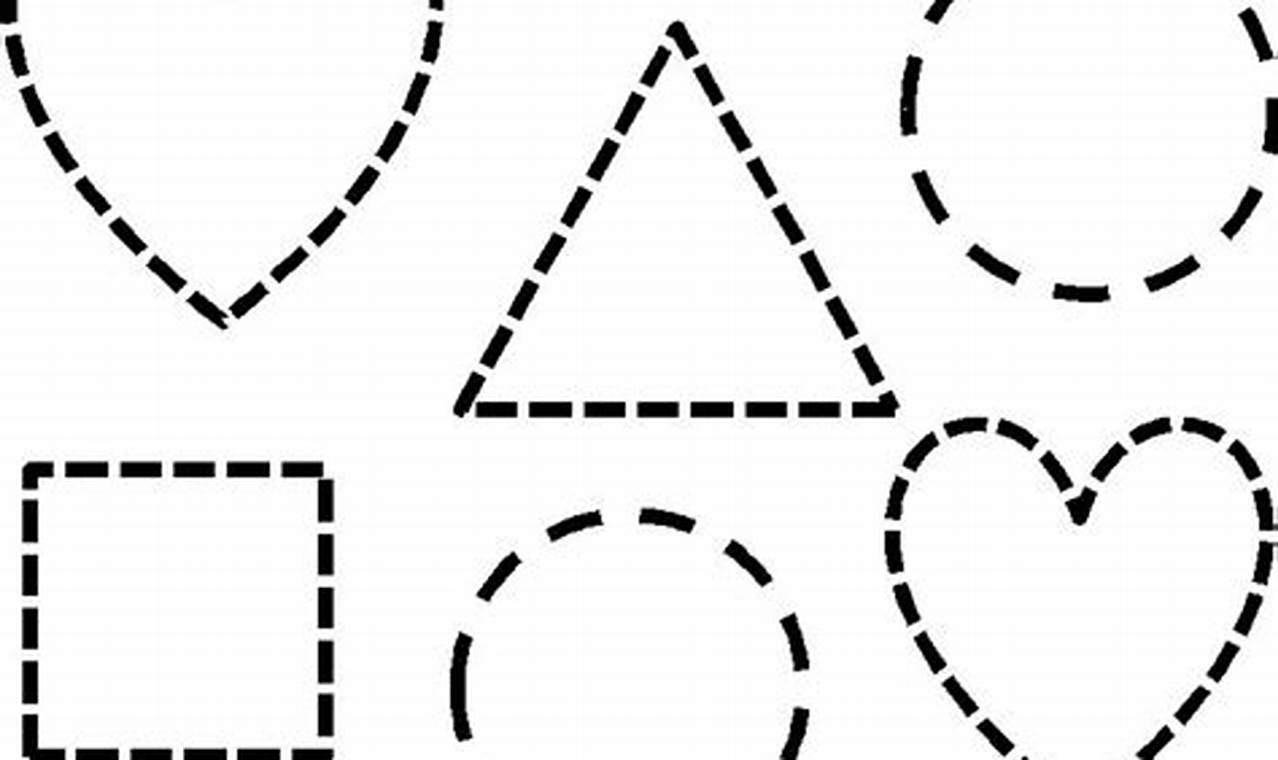The ability to recognize and manipulate shapes forms a fundamental building block in a child’s cognitive development. Activities focused on spatial awareness and hand-eye coordination not only prepare young learners for academic pursuits but also contribute to everyday tasks requiring precision and control. The “Shape Tracing and Cutting Practice” worksheet offers an engaging and effective approach to honing these crucial skills.
Utilizing the “Shape Tracing and Cutting Practice” worksheet provides several key benefits. The tracing component enhances fine motor skills, improving a child’s hand control and dexterity. Following the lines of different shapes strengthens hand-eye coordination and prepares children for handwriting. The cutting activity further refines motor skills and provides practical experience with tools, fostering independence and confidence. This worksheet also develops shape recognition, a foundational element for math and spatial reasoning.
This worksheet features a variety of common geometric shapes, including circles, squares, triangles, rectangles, and stars. Each shape is presented in a dotted line format, designed for easy tracing. Below each shape, there is a solid version for practicing cutting. Clear, bold lines ensure that children can easily follow the paths. The simple, uncluttered design minimizes distractions, allowing young learners to focus solely on the task at hand. Adequate spacing between shapes prevents overcrowding and supports clean cutting.
To effectively use the “Shape Tracing and Cutting Practice” worksheet, begin by having the child trace each shape carefully with a pencil or crayon. Encourage them to stay within the dotted lines. Once the tracing is complete, provide blunt-nosed scissors and guide the child to cut along the solid lines of each shape. Supervision is essential during the cutting phase. To maintain engagement, offer praise and encouragement throughout the activity. Breaking the worksheet into smaller sessions can prevent fatigue and sustain interest. A comfortable and well-lit workspace will also enhance the child’s experience.
To further enhance shape recognition and fine motor skills, consider incorporating related activities into your child’s learning. Kidtraces.com offers a range of complementary worksheets focused on alphabet tracing, number recognition, and pattern completion. Educational games that involve sorting and matching shapes can also be beneficial. Simple activities like drawing shapes in sand or using play dough to mold different forms can reinforce the concepts learned on the worksheet. Reading books with colorful illustrations of various shapes can also make learning enjoyable and comprehensive.
The “Shape Tracing and Cutting Practice” worksheet is a valuable tool for developing essential fine motor skills, hand-eye coordination, and shape recognition in young learners. By providing structured practice and engaging activities, this worksheet fosters confidence and prepares children for future academic success. Download the worksheet today and explore the many other free resources available on Kidtraces.com to support your child’s continuous learning journey.
